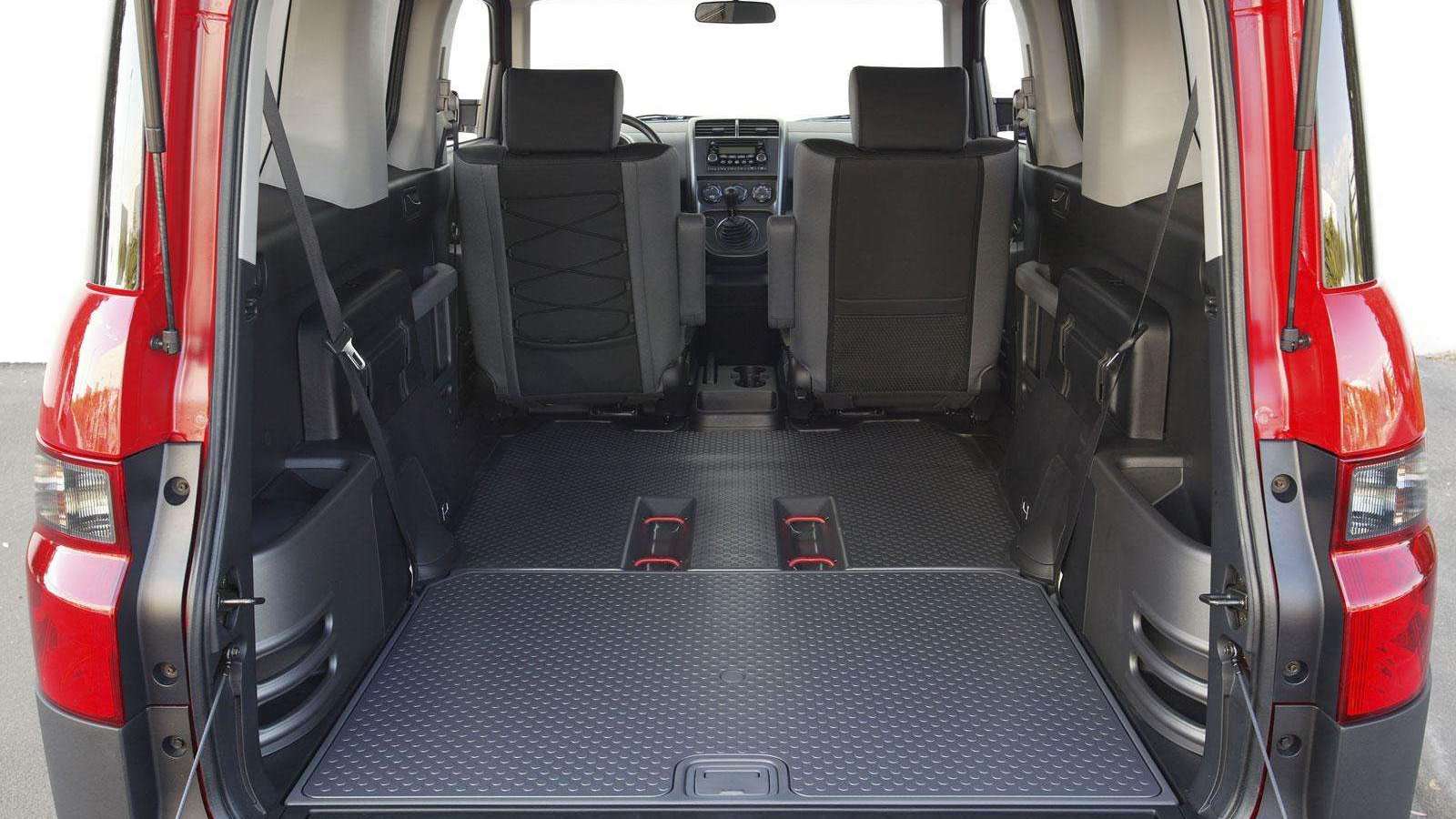The early 2000s brought about a few interesting design trends, and one of the most unusual was the fascination with boxes. The Scion xB kickstarted the fad in America, and hot on its heels was the significantly larger subject of today’s spotlight, the Honda Element.
The Element was based on a concept called the Model X that was shown at the 2001 Detroit Auto Show, and aside from the retractable rear roof section like that used by the Studebaker Wagonaire and GMC Yukon XUV, there were very few changes made to the rugged, square body for production. Rear half-doors, plastic composite fenders, ultra-configurable seats and a split tailgate all made it to the final car.
Though Honda’s big box was endearing for its unique looks and remarkable practicality, the model didn’t make it to a full decade on the market, ending with the 2011 model year. In that time, it saw two refreshes, one extremely minor and the other moderate.
Why the Honda Element?
As we touched on above, one of the major reasons you might be interested in the Honda Element is its immense practicality. It’s based on the Honda CR-V, and it’s actually slightly shorter in length and wheelbase, but at 74.6 cubic feet, it has an extra 2.6 cubic feet of maximum cargo space. That’s thanks to its boxy shape and nearly 8 inches of extra height. Coupled with seats that can be removed or flipped up and to the sides, it is a breeze to load bulky items from bikes to furniture.
There were myriad other versatile features. The floor throughout the cabin was a rubberized material that was easy to wipe down or lightly hose off, and it was completely flat under the movable seats for easy loading. The seats on most trims had a hard-wearing, water-resistant material. The split tailgate offered flexibility for carrying long items. Between the front seats was a movable tray or console for easy access to the rear. It was basically a tiny van that didn’t look like a van.
All those useful features were wrapped around trusty and proven Honda mechanicals. Powering it was a naturally aspirated 2.4-liter four-cylinder making around 160 horsepower (in 2006, power dropped to 156 and then rose to 166 the next year). Either front-wheel-drive or all-wheel-drive were available and both drivelines could be paired with either a five-speed manual transmission (until 2010) or an automatic, which had four gears until 2007 when a five-speed was introduced. And according to Dashboard Light, the Element has a great reliability score of 81.3 out 100, 35 points ahead of the average for the compact crossover/SUV segment. On top of all that, in our experience, the Element is nimble and comfortable with good steering, making it an excellent all-around vehicle.
Which Honda Element to choose?
Because the Element didn’t change much through its life, you’ll be well-served by just about any variant. That said, there are some things you may want to keep in mind. Arguably the main thing is transmissions. If you want a manual, you’ll be skipping the 2010 and 2011 model years. And if you’re looking for an automatic, you may as well try to get a 2007 or newer for the five-speed that nets an extra mile per gallon.
In addition to the improved automatic, 2007 also marked the introduction of key safety features for all trim levels: specifically ABS, side airbags, side curtain airbags and stability control. Before 2007, only the EX came with ABS and had the option of side airbags. The LX only got ABS in 2006, but no side airbag option.
Among the early Elements, you’ll likely want an EX not just for the ABS, but for other convenience features it included such as cruise control and air conditioning, the former of which wasn’t available on DX and LX models the first couple years of production and the latter of which was an option.






